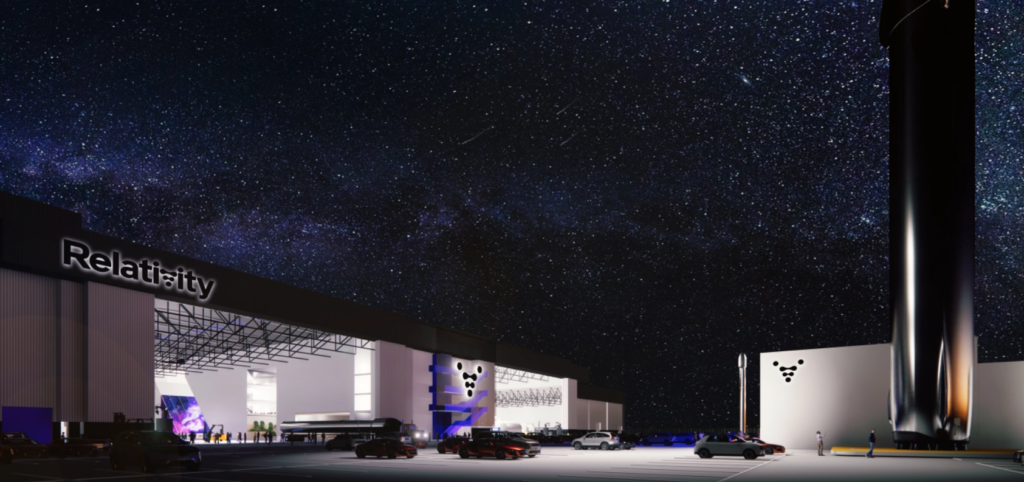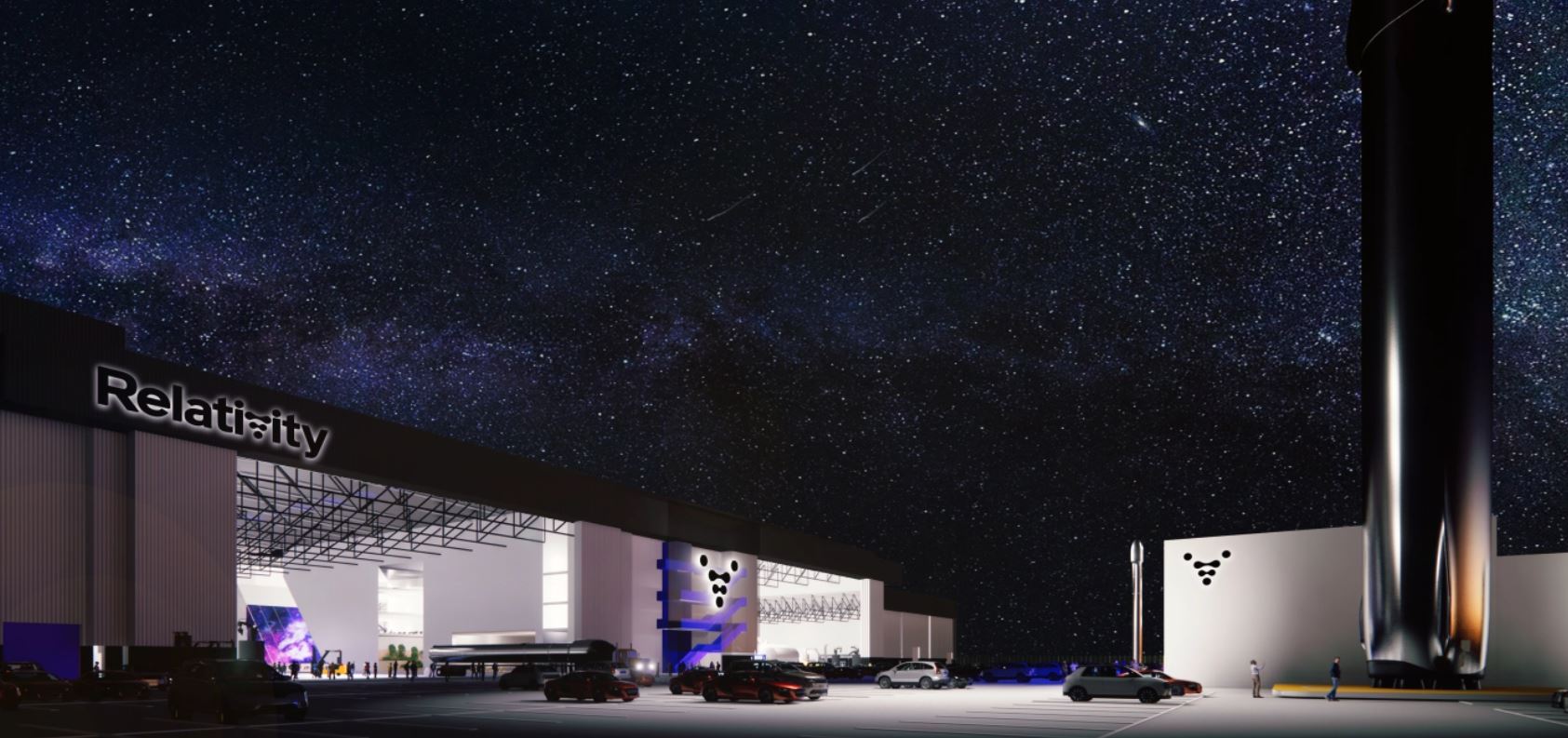
A Closer Look At Relativity Space’s Manufacturing Process
Different companies throughout the space industry are trying unique ideas with the hopes of reinventing the process of sending payloads to orbit and beyond. This involves changing how rockets are typically launched, manufactured, tested, or even used. Relativity Space is a great example with very ambitious plans including 3D printing, reusing rockets, and much more.
Relativity Space has been very busy in recent months. With an upcoming first-ever Terran 1 launch attempt, a lot of people are waiting to see the results. This is mainly due to the unique manufacturing style utilizing 3D printing. Here Relativity uses some of the largest printers in the world to produce the majority of the parts, structures, and components on launch vehicles such as Terran 1.
While very different, this process offers a long list of benefits if successful. Up until now, Relativity Space has been continuing to develop and improve the process and general development of its launch vehicle. All of which in an attempt to change how rockets are manufactured within the industry. Here I will go more in-depth into Relativity Space’s 3D printing process and go over recent news and highlights regarding the company.
Progress & Plans

Each day Relativity Space is getting closer and closer to the first launch attempt. As you can imagine there is a lot that needs to happen before Terran 1 gets anywhere near the launch pad. However, Relativity has been working very hard to test and prep the launch vehicle for the upcoming launch. Over the past few months, the company has provided updates on the progress and when to expect the first launch. Early this month Relativity tweeted multiple times highlighting different milestones and plans for the future. This included a 60 second hot fire test of the second stage which went very well. Relativity also highlighted the progress of its new headquarters in California which is meant to facilitate many different ambitious goals for the future. Lastly, some of the most recent news regarding the first Terran 1 launch came in a tweet in early April. On April 7th, Relativity tweeted saying, “As we look towards the first launch of Terran 1, the vibes are running high, and we wanted to take a moment to revel in the beauty and evolution of our day one, Terran 1—the world’s first entirely 3D printed rocket. Enjoy!” This tweet included a short video of the 3D printing process.
However, it’s clear that the company is very focused on the first launch and is working hard to get there. This also includes improving and continuing to test the 3D printing process prior to the first launch. It’s important to mention that a first ever launch tests many things for a normal rocket, even more so a practically fully 3D printed rocket. The result of this launch will provide Relativity with a lot of invaluable information no matter the outcome. Looking back in time, this launch was originally scheduled for late 2021. However, this time frame was pushed back and the company estimated we could see the launch happen in early 2022. As of right now, we can expect this launch to happen later this year assuming everything goes according to plan for Relativity. Once ready, the first launch is set to take off from Cape Canaveral LC-16. LC-16 was used by the US Air Force for Titan I, Titan II, and Pershing missile launches, and briefly by NASA for Gemini crew processing, and static test firing of the Apollo Service Module’s propulsion engine. Not long from now, the launch site will help be responsible for the launch of a next generation launch vehicle. In terms of why the launch has been delayed, Relativity suggests that it was a large list of reasons. This would include general delays, manufacturing process, testing, and other necessities prior to a first launch. In order to make significant changes, and reinvent certain processes, Relativity has taken risks that could pay off depending on the future success of 3D printing and more.
Relativity Manufacturing

Now that we have a better idea of the progress being made toward the first Terran 1 launch, we can take a closer look at what makes this launch so special and different from others within the industry. Relativity utilizes two types of 3D printing to produce over 90% of the dry mass of Terran 1. Relativity’s large format, proprietary 3D printing process, known as Stargate, is used to produce primary and secondary structures for Terran 1 from a proprietary aluminum alloy – with printing, inspection, and the little post-processing required occurring all in a single print cell. Stargate can currently print structures up to 3.4 meters in diameter by 7.6 meters tall, creating the world’s largest metallic printed parts. Relativity uses direct to metal laser sintering (DMLS) to produce geometrically small, high fidelity components for Terran 1. Each Stargate printer includes real time in-situ monitoring, inspection, and post-processing capabilities, which take place layer-by-layer rather than post-print. Video, audio, and thermal sensors enable closed-loop control and in process inspection to mitigate flaw formation. Computer vision and machine learning bring state-of-the-art control techniques to a highly nonlinear, highly coupled process. Relativity evaluates coupons from each print for traceability, and uses in-house materials and processing capabilities for inspection and characterization of mechanical properties.
It’s important to point out that not only is the 3D printing process unique, but the size of the printers and factory itself is as well. Relativity’s proprietary Factory of the Future centers on Stargate, the world’s largest metal 3D printers, that create Terran 1 from raw material to flight in 60 days. Relativity’s Stargate printers’ patented technology enables an entirely new value chain and innovative structural designs that make Terran 1 and Terran R possible. By developing its Factory of the Future and rockets together, Relativity accelerates its ability to improve design, production, quality, and speed. Through this approach, the technology immediately identifies, characterizes, and adapts to any print anomalies, resulting in fully verifiable printed products. The result is the world’s first evolvable aerospace production line using data-driven learning to track and improve every aspect of rocket manufacturing. By fully leveraging 3D printing techniques, Relativity’s team greatly simplifies the supply chain, reduces part count by 100x across Terran 1’s structure and engines, significantly reduces lead times and overhead, and increases overall vehicle system reliability. Not only are the printers important, but also the materials used. Relativity developed multiple proprietary alloys custom designed for 3D printing to meet mission-critical performance. In addition, parts are inspected during and after printing to ensure they meet the highest standards of uniformity and quality. These materials have to work for printing, but also combine strength and reduced weight to maximize Terran 1’s capabilities.
Relativity often points out that “For 60 years, aerospace manufacturing has relied on large factories, fixed tooling, complex supply chains, and extensive manual labor to build costly rockets comprised of 100,000+ parts in 2 years or longer.” In order to accelerate innovation in the industry, Relativity built its Factory of the Future, the first aerospace platform to automate rocket manufacturing, vertically integrating intelligent robotics, software, and data-driven 3D printing technology. Incorporating Stargate with AI-driven controls, Relativity’s Factory of the Future continuously optimizes production, resulting in greatly compounded quality and time improvements, lower costs, and product designs previously not possible. Relativity is an application-layer 3D printing company that is starting with rockets, and will extend its Factory of the Future to all of aerospace. The company’s overall goal is to reduce part count, build time, and iteration time.
Lastly, we can take a closer look at the technology responsible for a lot of the manufacturing process. You first have the different proprietary materials that are used. These are custom designed for printing and feature many necessary features. This includes high strength alloys specially designed for Stargate printers, physical properties designed to meet mission-critical structural requirements, in-house material characterization lab for quickly iterating on new alloy development, and more. Relativity even developed multiple proprietary alloys custom designed for 3D printing to meet mission-critical performance. Next is AI controls. This features intelligent data-driven manufacturing, machine learning control algorithms, and a collaborative additive and subtractive process that enables complex geometry. Finally, there are the various sensors and analytics. These feature verification and validation data captured during manufacturing, flexible and highly scalable system architecture, and cloud-based manufacturing simulation and training. All of which makes the 3D printing process unique in many ways.
Conclusion
Different companies throughout the space industry are trying unique ideas to try and improve the process of accessing space. Over the past few years and especially in recent months, Relativity Space has been working towards the first Terran 1 launch. After a few delays, it’s possible the launch can happen later this year. Not only will it demonstrate the capabilities of Relativity, but also the value of 3D printing, and the future of rocket manufacturing. We will have to wait and see how it progresses and the impact it has on the space industry.
